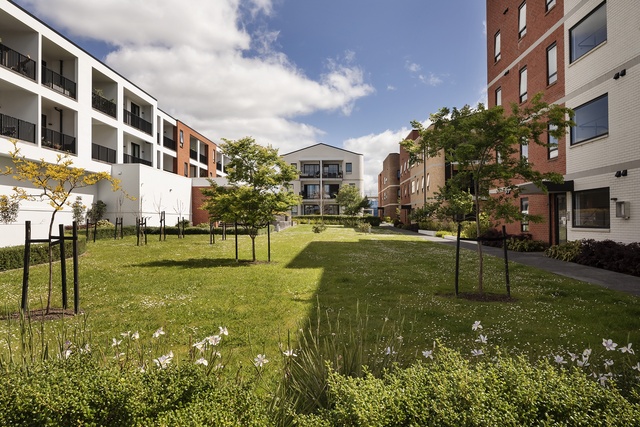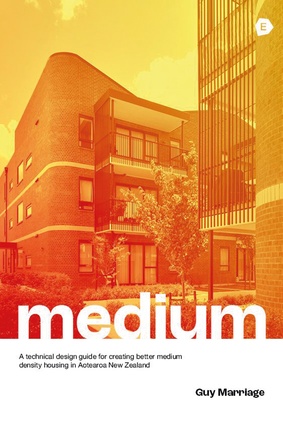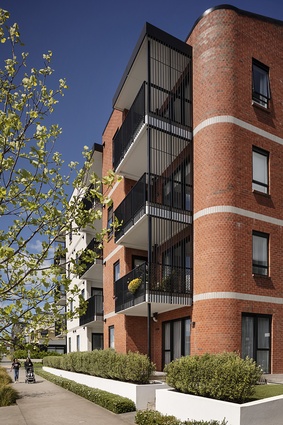Review: Medium - A technical design guide for creating better medium density housing in Aotearoa New Zealand
Stuart Niven believes Medium’s vision for medium-density housing in Aotearoa can be more than just an ambitious dream if central government comes to the party.
Guy Marriage’s Medium is an important, beguiling and thorough examination of contemporary medium-density housing in New Zealand.
It’s important because, as a relatively new, strategically preferred and rapidly accelerating form of urban density, the medium-density residential type is likely to replace the familiar, less-dense versions of the same and supplant the urban norm of the single, stand-alone residential building on its own piece of land so ingrained in our national residential psyche.
The book has big ambitions and much to address. As Marriage points out, when it comes to achieving successful urban density, New Zealand’s legislative and planning settings, design knowledge and abilities, development and construction experience and practice, and ownership, leasing and rental structures are all manifestly ill-prepared to achieve comprehensive, carefully considered development of the medium-density type.

He leaves us in little doubt that this is a situation that requires urgent national attention. But, he begins with some terms of reference that both define the type and nail his ambitions and intentions for medium density – and for this book – firmly in place.
By medium-density housing (MDH), Marriage refers to collectively grouped housing of three to six storeys in a closely intertwined built setting that skilfully incorporates individual privacy and well-designed, communally shared outdoor space. He also outlines the role that MDH must play in New Zealand’s commitment to achieving a zero-carbon future. In championing the physical and the technical, he is emphatic that the book “… is a technical design guide, not a planning guide…”
With this focus on the technical, the book is divided into four basic sections – Plan, Design, Build and Built.
‘Plan’ – the introduction – covers a working definition of density as it is beginning to be understood in our low-density country. This is set against the broad urban objectives of containing city sprawl – sprawl that gobbles up otherwise productive, food-generating land, and creates costs and inefficiencies in our infrastructure systems and our public transport network that struggles to service the extremities of our generally diluted, sparsely populated city forms. The core of this section is an elaborate list of ‘issues’ that MDH has to address and resolve. The many ‘answers’ to these issues, spread throughout the book, form its driving narrative.
‘Design’ confronts New Zealand’s generally poor standard of housing requirement and the imperative to design and build better. It covers the variety of size and type of MDH housing. It identifies those elements of MDH design that strongly encourage community and examines the circulation types and qualities of MDH living areas, with an eye to achieving a disciplined economy of usable space.
‘Build’ is the most contentious part of the book as, leveraging off the list of construction issues in ‘Plan’, Marriage identifies six areas of currently available building element innovation where the precision and comprehensive nature of factory-built housing elements (and their increasing availability) is championed over the ‘she’ll be right’ traditions of onsite construction. It’s contentious because it isn’t exhaustive and Marriage has had to exercise choice. It’s also likely to need continual updating.
‘Built’ presents four case studies of completed MDH developments across the country: all exceptional examples of what MDH at its best can achieve.
Clearly, Medium is on a crusade to embed and significantly improve the design and construction qualities of this new, pervasive housing type. While its readership is broad, the strategic target for Marriage’s argument and his technical handbook is the current Labour Government and its embedded commitment to build housing and transform urban densities.
Central government is the only institution capable of pragmatically championing and legislatively influencing the design and delivery of excellent-quality MDH – a housing type we’re likely to live with for a very long time. It’s also one of the few agents capable of promoting, through the scale of its national housing programme and its attendant economies of scale, the wide use of prefabricated building components with all the implied time-saving, precision and quality of performance. This, of course, delivers inherently more affordable and environmentally superior housing.

Is Medium’s ambition realistic or just a well-meant fantasy?
To try to answer that I draw on my urban design experience and direct knowledge of the contemporary role of Government Architects within Australia’s state governments.
To achieve Marriage’s far-sighted ambitions for a generally high standard of locally generated MDH design and construction, there needs to be a knowledgeable champion embedded in government, whose skill sets, abilities and operational style are firmly rooted in an understanding of the design process and in construction knowledge. We may have a Ministry of Housing and Urban Development and Kāinga Ora – the Government’s Super Agency for housing development – but we’re missing a source of pragmatic and experienced design and construction advocacy: a small, well-resourced, and powerful agent of change within government with the specific task of influencing our development industry, our planning and guidance structures, and our construction knowledge and abilities, to ensure that Medium’s vision for a New Zealand version of MDH becomes more than just a well-meaning hope.
Medium truly is the message.














